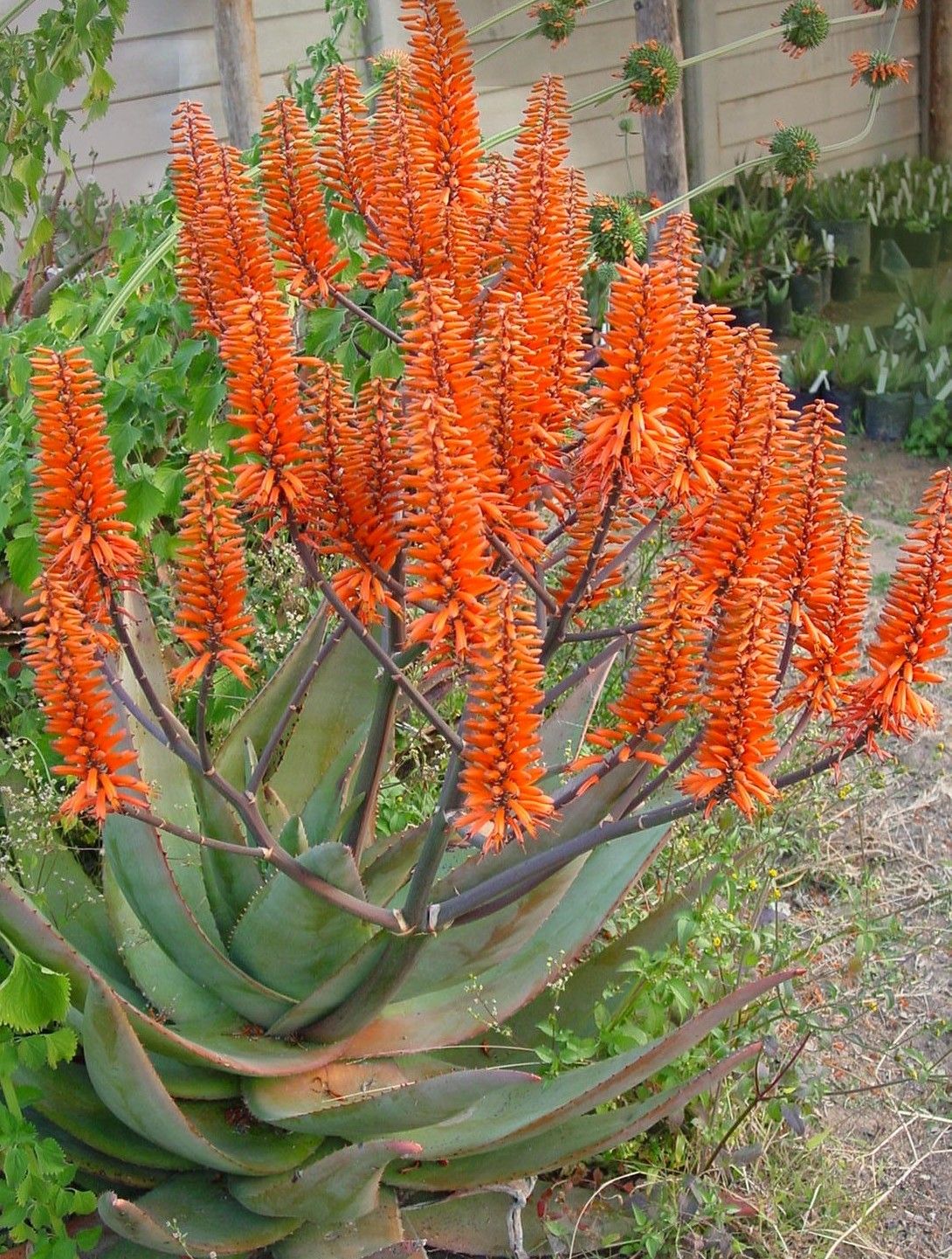Want a show-stopping aloe vera plant? Those thick, succulent leaves are truly impressive, and with the right care, you can cultivate an aloe that’s the envy of every plant enthusiast. Whether your current aloe is bursting at the seams or you’re starting from a tiny pup, this guide will equip you with the knowledge and techniques to grow a truly magnificent aloe plant. From choosing the perfect pot and lighting to propagating new plants and troubleshooting common issues, we’ll cover everything you need to know to unlock your aloe’s full potential, transforming it from a humble houseplant into a thriving succulent centerpiece.
Choosing the Right Home for Your Aloe
Just like us, aloe plants need the right space to flourish. Cramped roots restrict growth, so selecting the appropriate pot is crucial for maximizing your aloe’s size. A terra cotta pot, at least two to three times wider than the current root ball, is an excellent choice. Its porous nature allows for vital air circulation, preventing soggy soil and the dreaded root rot that can plague over-watered aloes. For a deeper dive into pot selection, check out our guide on choosing the right pot for your aloe. [Add internal link here if available]
Basking in the Glow: Aloe Light Requirements
Aloes are sun worshippers, thriving on at least six hours of bright, indirect light daily. A south-facing window is generally ideal, but observe your plant for clues. If it starts stretching towards the light, becoming tall and thin (“leggy”), it’s likely craving more sunshine. Relocating it to a brighter location can correct this. Conversely, too much direct sunlight can scorch the leaves, so finding the right balance is essential.
The Watering Game: Mastering the Art of Hydration
Overwatering is the most common pitfall for aloe enthusiasts. These succulents store water in their leaves, so less is definitely more. Allow the soil to completely dry out between waterings, then give it a thorough soaking, ensuring water reaches all the roots. Letting excess water drain completely replicates the “drought and deluge” cycle of their natural desert habitat.
Soil Matters: The Foundation for Healthy Growth
Well-draining soil is paramount for aloe health and growth. Standard potting mix can be too dense, so amending it with perlite or pumice (a 1:1 ratio) creates a loose, airy mix that allows water to drain efficiently. This prevents root rot and creates a supportive environment for robust root development.
Multiplying Your Aloe: Pup Propagation
As your aloe matures, it may produce “pups” – baby aloe plants sprouting around the base. These offer a simple way to expand your aloe collection. When a pup reaches about three inches tall, gently separate it from the mother plant (after carefully removing the plant from its pot) and pot it individually. Each pup has the potential to grow into another majestic aloe.
Troubleshooting Common Aloe Concerns
Even with meticulous care, issues can arise. This table addresses common problems:
| Problem | Likely Cause | Solution |
|---|---|---|
| Brown, mushy leaves | Overwatering | Let the soil dry out completely before watering again. Consider repotting in fresh, well-draining soil. |
| Pale, stretched leaves | Lack of light | Move the plant to a brighter location or supplement with a grow light. |
| Shriveled leaves | Underwatering | Give the plant a thorough watering, ensuring the water reaches all roots. |
Reaping the Rewards: Harvesting Aloe Gel
One of the perks of a large aloe is the abundant gel it produces. To harvest, carefully snip off a mature leaf at the base, slice it open, and scoop out the gel. This gel can be used to soothe minor burns, moisturize skin, or even added to smoothies (although internal use should be approached with caution and ideally after consulting with a healthcare professional. Some individuals may experience digestive discomfort). Harvest responsibly, avoiding excessive removal from a single plant. For a truly impressive succulent, learn how to care for a big aloe vera plant in your home.
Aloe in the Elements: Outdoor Growing
If you live in a warm climate (zones 9-11), your aloe can thrive outdoors, benefiting from fresh air and ample sunlight. However, they are frost-sensitive, so bring them indoors or provide protection during colder weather. Under ideal outdoor conditions, some aloe varieties can achieve truly impressive sizes, rivaling those seen in botanical gardens. Gather around a big fire pit on a cool evening and enjoy the warmth and ambiance it provides.
The Aloe Size Spectrum: From Miniature to Majestic
Aloe plant size is remarkably diverse, ranging from compact indoor varieties to towering outdoor giants. Aloe vera, commonly grown indoors, typically reaches 1-3 feet, but with exceptional care, can approach 3 feet tall. However, other aloe species, like Aloe marlothii (up to 20 feet) and Aloe dichotoma (up to 10 feet), can achieve breathtaking heights in the right environment.
Several factors influence aloe size, including sunlight exposure, watering practices, soil composition, and pot size. Just as with Aloe vera, these varieties thrive on bright, indirect light and well-draining soil, mimicking their native arid environments. Regular pruning and pup removal can also help manage size and promote the growth of a larger main plant.
Choosing the right aloe species for your space is crucial. For indoor settings, compact varieties are ideal. But if you desire a dramatic landscape focal point, a larger species might be better suited. Understanding the growth potential of different aloe varieties helps prevent the “oops, it outgrew its space” scenario.
Microclimates within your garden or home – variations in sunlight, temperature, and humidity – can significantly impact aloe growth. A sheltered spot might benefit frost-sensitive varieties, while a sunnier location could encourage faster growth.
Here’s a glimpse at the size range of various aloe species:
| Aloe Species | Mature Size Range (Approx) | Notes |
|---|---|---|
| Aloe vera | 1-3 feet | Common, adaptable, great for indoors |
| Aloe marlothii | Up to 20 feet | Majestic, tree-like, landscape statement |
| Aloe dichotoma | Up to 10 feet | Tree aloe, striking architectural form |
| Aloe polyphylla | 1-2 feet | Spiral aloe, unique growth pattern |
| Aloe brevifolia | 6-12 inches | Compact, ideal for containers |
These are estimates, and actual size can vary based on growing conditions. Even within the same species, factors like sunlight, water, and soil can influence individual plant size. Ongoing research continues to expand our understanding of these fascinating plants.
Identifying the Aloe Giants
Several aloe species can grow to impressive sizes, surpassing the typical Aloe vera. Aloe marlothii (mountain aloe), can exceed ten feet, while Aloe vaombe (Malagasy tree aloe) can tower over twelve feet with rosettes spanning five feet in diameter. Aloe barberae (tree aloe) develops a tree-like form and reaches similar heights, prized for its striking architectural presence. Aloe ferox (Cape aloe or bitter aloe), known for its medicinal properties, can also reach six to ten feet.
Distinguishing these large aloes involves observing characteristics like leaf shape, flower color, and growth habit:
| Aloe Species | Leaf Shape | Flower Color | Maximum Height | Growth Habit |
|---|---|---|---|---|
| Aloe marlothii | Broad, thick | Orange | 10+ feet | Single stem |
| Aloe vaombe | Lance-shaped | Red-orange | 12+ feet | Unbranched |
| Aloe barberae | Curved | Pink-orange | 10+ feet | Branching |
| Aloe ferox | Thick, fleshy | Red | 6-10 feet | Single stem |
These aloe giants generally prefer full sun to partial shade, well-draining soil, and infrequent watering. They thrive in warmer climates (USDA Zones 7-10). Many can be propagated from pups, allowing you to cultivate new majestic specimens.
Taming the Aloe Giant: Managing Overgrowth
An overgrown aloe isn’t a cause for alarm but rather an opportunity for propagation and shaping. Signs of overgrowth include leaning, tipping, crowded pups, and roots circling the pot.
Pruning is essential for maintaining size and shape. Use a clean, sharp knife to remove dead or damaged leaves at the base. Repotting into a slightly larger pot with drainage holes and fresh, well-draining soil provides more space for root development. Divide pups to reduce crowding and create new plants.
Provide bright, indirect light, water only when the soil is dry, and fertilize sparingly. Consider the specific needs of your aloe variety. If it’s stretching towards the light, it probably needs more sun. Here’s a quick guide:
| Problem | Solution |
|---|---|
| Leaning/Tipping | Repot into a larger, more stable pot with fresh, well-draining soil. This will provide better support. |
| Crowded Pups | Carefully divide the pups from the mother plant and pot them individually to reduce crowding. |
| Roots Circling the Pot | This is a sure sign your aloe needs more space! Repot it into a larger container. |
| Leaves Extending Too Far | Prune back some of the longer leaves at the base using a clean, sharp knife. This helps manage size and shape. |
| Leggy Growth | Your aloe is probably reaching for light. Increase its light exposure by moving it to a sunnier spot or using a grow light. |
With the right care and attention, your aloe plant can thrive, becoming a striking centerpiece in your home or garden. Remember, ongoing research in plant care continues to reveal new insights. Stay curious, and happy growing!
- How to Get Mustard Out of Clothes: Fast & Effective Stain Removal Guide - April 26, 2025
- How to Get Mustard Out of Clothes: A Complete Guide - April 26, 2025
- How to Get Motor Oil Out of Clothes: Proven Methods & Step-by-Step Guide - April 25, 2025










